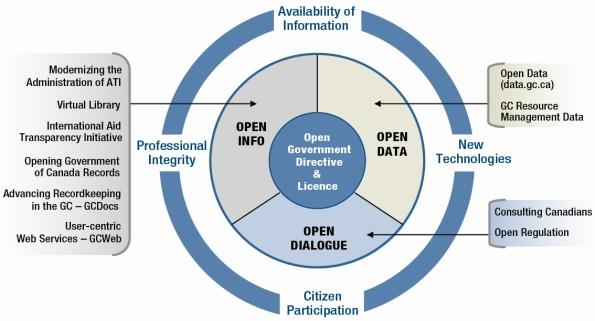Widgetized Section
Go to Admin » Appearance » Widgets » and move Gabfire Widget: Social into that MastheadOverlay zone
How Open and Connected Is Government?
The views expressed are those of the author and do not necessarily reflect the views of ASPA as an organization.
By Sunday Olukoju
January 27, 2015
Introduction
According to Sukumar Ganapati and Christopher Reddick’s in a 2014 article titled “The Use of ICT for Open Government in U. S. Municipalities,” U.S. chief administrative officers (CAOs) were surveyed along the three dimensions of open government: transparency, participation and collaboration. The CAO’s reported satisfaction with implementing open government along with having a significantly positive view of collaboration. This could mean that open government is an idea whose time has come to stay for good.
It also reinforces earlier efforts by other jurisdictions. For example, the Honorable Tony Clement, president of the Treasury Board of Canada, said in 2011: “The Government of Canada remains committed to fostering the principles of open government,” and that it “offers Canadians greater opportunities to learn about and participate in government, in the economy and in our democratic process.” Through a diagram (below), the government synthesized 12 commitments. At the core are two commitments considered foundational to the success of Canada’s overall open government strategy: open government directive and open government license.

Figure 1: Our Commitments – Text version
Source: http://open.canada.ca/en/canadas-action-plan-open-government
The Promises and Potential of Big and Open Data
Canada’s idea of big and open data and its importance to citizen participation is backed up empirically. According to John Carlo Bertot, Ursula Gorham, Paul Jaeger, Lindsay Sarin and Heeyoon Choi, in a 2014 article titled “Big data, open government and e-government: Issues, policies and recommendations,” the transformative promises and potential of Big and Open Data are substantial for e-government services, openness and transparency, governments, and the interaction between governments, citizens and the business sector. From “smart” government to transformational government, big and open data can:
- Foster collaboration.
- Create real-time solutions to challenges in agriculture, health, transportation and more.
- Promote greater openness.
- Usher in a new era of policy- and decision-making.
It is also in sync with the principles such as the right of the public to know or freedom of information. It also has economic, social, administrative and political benefits that will flow from the wide availability of such data. For example, top public managers in Ireland placed higher priority on the economic potential of open data to reduce costs and provide the private sector with a tool to enable it to generate employment and revenue, according to research from Emily Barry and Frank Bannister.
Challenges
Bertot et al identified some challenges to be addressed regarding big and open data, including:
- Access and dissemination.
- Digital asset management, archiving and preservation.
- Privacy.
- Security.
Additional challenges identified by Zuiderwijk, Jeffrey and Janssen include:
- Data access impediments.
- Data use impediments.
- Data deposition impediments.
Other eight categories identified by Zuiderwijk et al are:
- Availability and access.
- Findability.
- Useability.
- Understandability.
- Quality.
- Linking and combining data.
- Comparability and compatibility.
- Metadata.
As a follow-up to the 2012 Canada government directive that all government departments should publish summaries of the completed access to information (ATI) requests, Oye Times reviewed the completed ATI requests for the Treasury Board. They reported that of the 113 completed ATI requests completed for the first six months of 2013; only 30.1 percent received a full disclosure from the Treasury Board, while nearly half of those completed received a partial disclosure. Only 19.5 percent of the requests revealed “no records existed.”
Conclusion
One’s personal experience as a citizen is revealing. The first challenge was getting a Queens Bench-issued guardianship order. The School Division, the school, lawyers, the Education Minister and the Court all appeared clueless regarding how to go about obtaining it. The Deputy Minister who received the brief from the Minister only managed to send a general email referring applicant back to the website that gives no direction.
The second experience was a little bizarre. Attempts to know the outcome of my cousin’s application as a provincial nominee candidate, after I was interviewed several months earlier was rebuffed with a warning not to inquire about it until they get back to me. This does not appear to be an open government legacy.
The third experience was a phone call to the Canada Revenue Agency office. After several attempts, I eventually got through. However, the auto response took me through many merry-go-rounds before announcing that I will not be able to talk to a representative due to high volume. Then the phone died automatically.
So, how open, and how connected is our government to citizens?


Follow Us!